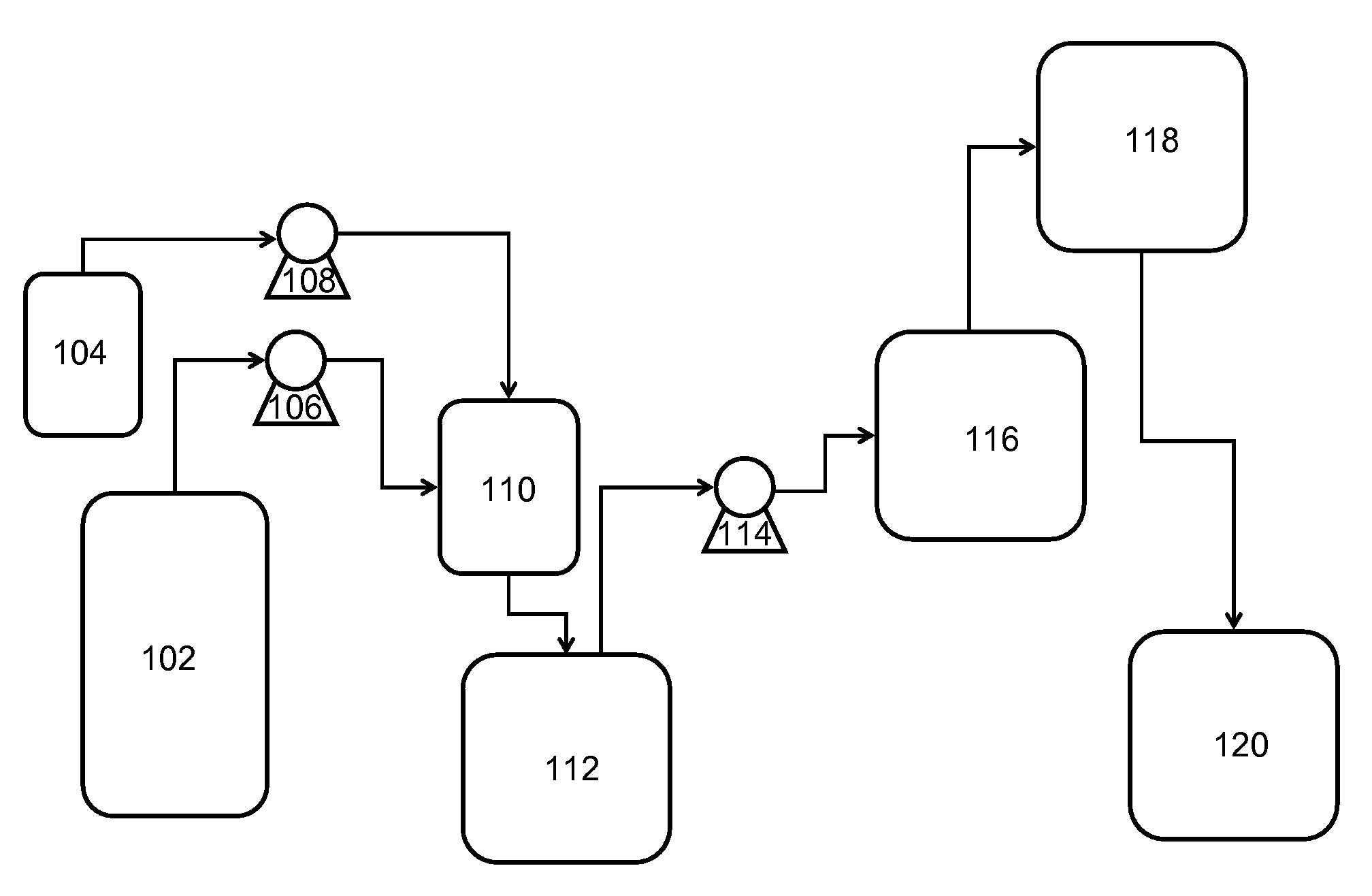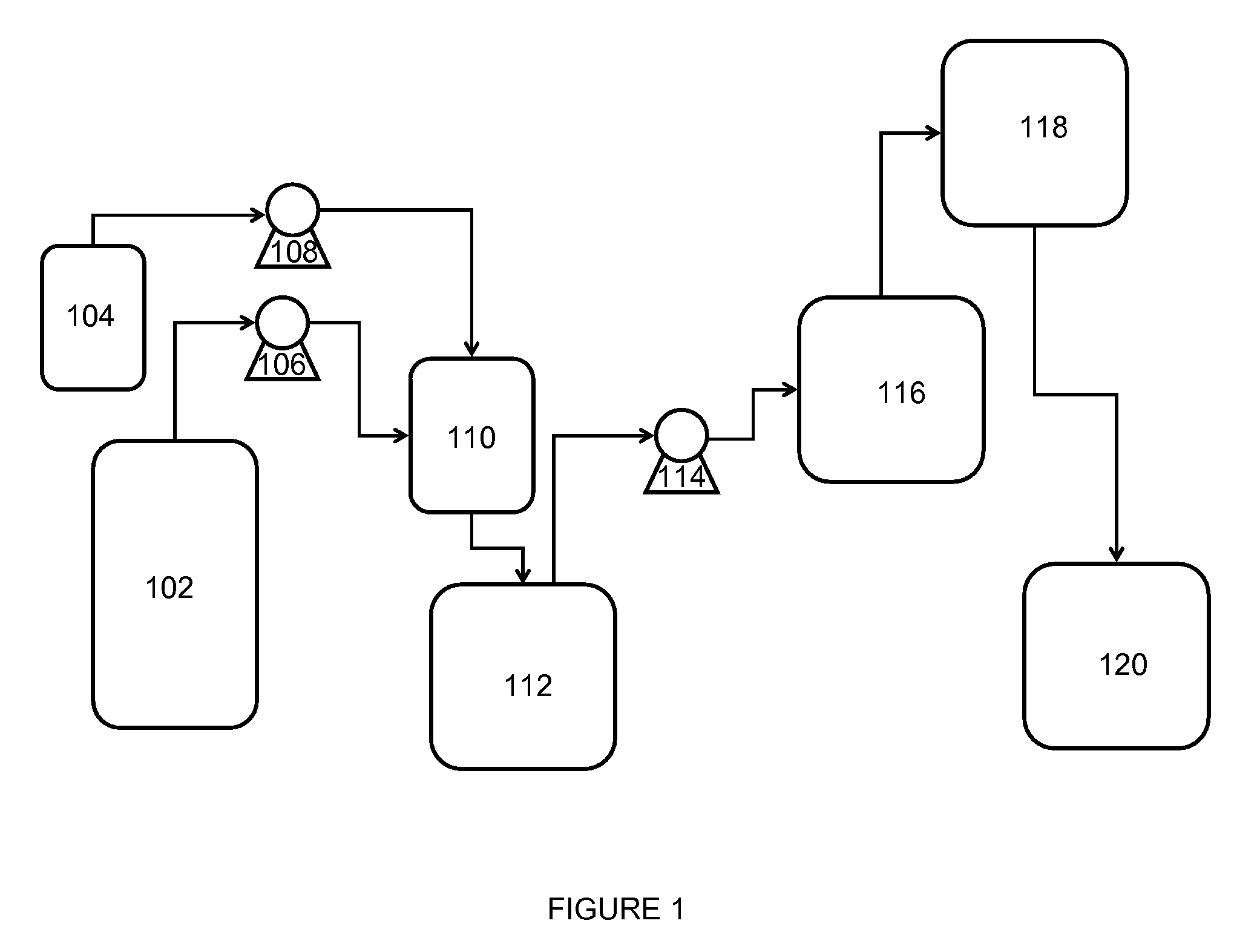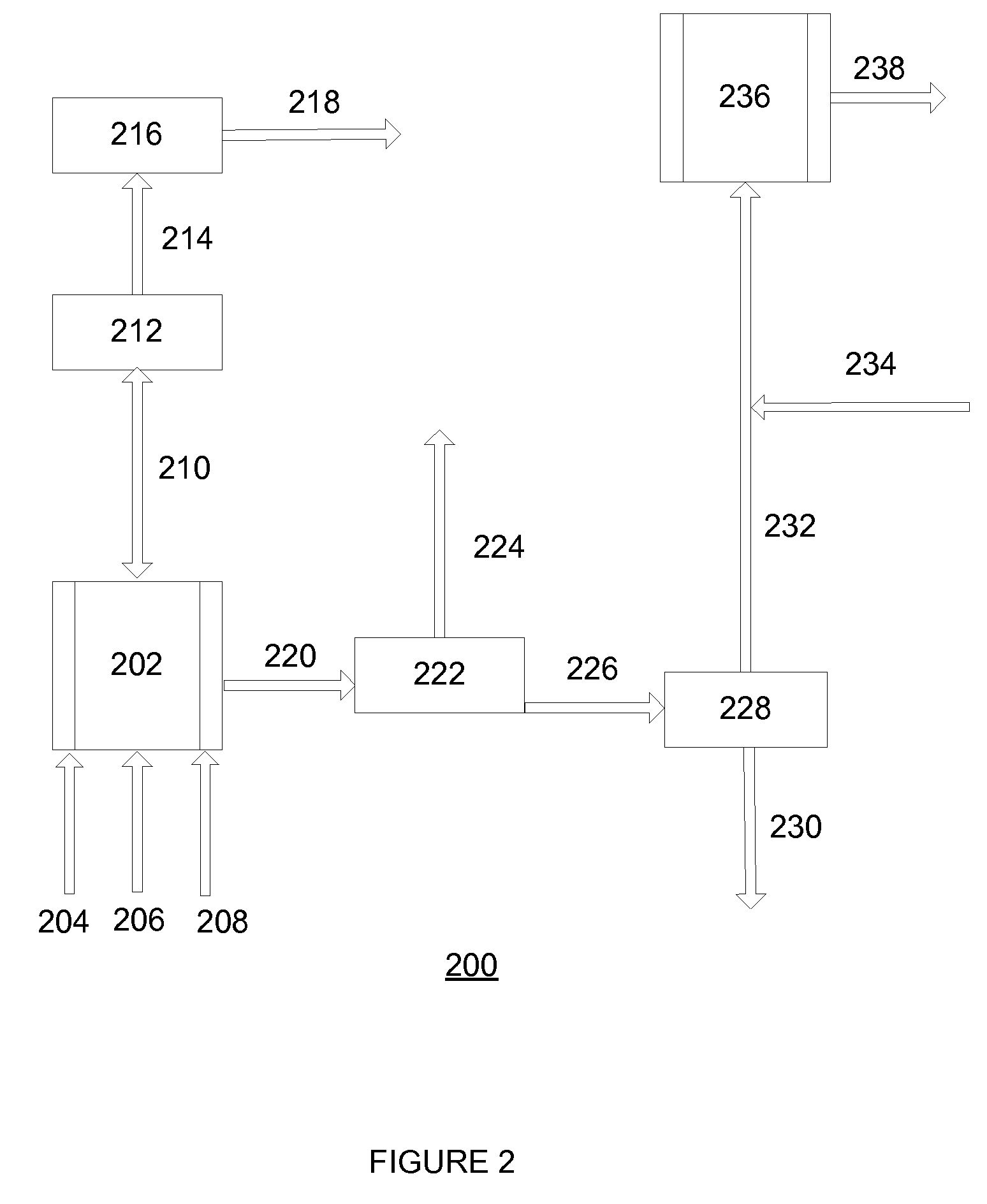Method for continuous production of (meth)acrylate syrup and adhesives therefrom
a technology of methacrylate and acrylate, which is applied in the direction of adhesive types, coatings, special surfaces, etc., can solve the problems of reduced processing efficiency and other limitations, large processing equipment requirements, and undesirable use of solvents with batch processing methods, especially organic solvents,
- Summary
- Abstract
- Description
- Claims
- Application Information
AI Technical Summary
Benefits of technology
Problems solved by technology
Method used
Image
Examples
example 1
[0067]With reference to FIG. 2, a flow diagram 200 exemplifying a method of the invention for continuous preparation of (meth)acrylate syrup is illustrated. A first reactor 202 is continuously supplied with acrylic acid and iso-octanol via conduits 204 and 206, respectively, in a proportion such that iso-octanol is supplied in a molar excess of about 1.1:1 to about 2:1 to that of the acrylic acid. Sulfuric acid is added to the reactants via conduit 208 in an amount such that it is present in about 0.5 weight % to about 5 weight % of the total reactant mixture.
[0068]The reactant mixture is continuously mixed while present in the first reactor 202 operating at a reduced pressure of about 50 mmHg to about 250 mmHg. The first reactor 202 (i.e., an esterification reactor) is maintained at a temperature of about 70° C. to about 135° C. as an esterification reaction leads to monomer formation. During this stage, water by-product from formation of monomer passes via conduit 210 through a pa...
example 2
[0073]A pilot glass reactor, such as those sold using product designation “PRG-7010-01” from Prism Research Glass (Raleigh, N.C.), having a capacity of 15 liters was jacketed and heated using mineral oil to 100° C. and an operating pressure of 100 mmHg. The first glass reactor was continuously supplied with acrylic acid at a rate of 216 grams per hour (g / hr) (3 moles per hour). Simultaneously, iso-octanol was continuously supplied to the first glass reactor at a rate of 455 g / hr (3.5 moles per hour). Sulfuric acid was continuously supplied to the first glass reactor at a rate of 13.7 g / hr (0.14 moles per hour) to maintain a concentration of sulfuric acid in the reactor of 2% of the total weight.
[0074]The reaction was allowed to proceed for three hours before material began to be drawn from the reactor. During this time, water by-product from formation of monomer passed through a partial condenser (maintained at a pressure of 100 mmHg and a temperature of 80° C.) and then a total con...
example 3
[0079](Meth)acrylate syrup prepared according to a method of the invention described in Example 2 was mixed with acrylic acid in a weight ratio of 90:10. To this mixture was added about 0.5-2.0% by weight photoinitiator (IRGACURE 819, a bis-acyl-phosphine oxide photoinitiator with a maximum absorption in the range of about 360-390 nanometers available from Ciba Specialty Chemicals Inc. of Tarrytown, N.Y.), and about 0-1.2% by weight stannous octoate catalyst, based on total syrup weight. The mixture was coated onto a 50 μm-thick (2 mil-thick) polyethylene terephthalate substrate to a thickness of about 25-50 μm (1-2 mils) and laminated with a transparent 75 μm-thick (3 mil-thick) polyethylene terephthalate release to form a transfer tape enclosed within an inert environment. The laminated sample was then placed about 8-18 cm (3-7 inches) away from a bank of BLB bulbs having a maximum spectral output of about 354 nanometers (e.g., such as F8T5 ultraviolet bulbs available from commerc...
PUM
| Property | Measurement | Unit |
|---|---|---|
| atmospheric boiling temperature | aaaaa | aaaaa |
| temperatures | aaaaa | aaaaa |
| boiling point | aaaaa | aaaaa |
Abstract
Description
Claims
Application Information
 Login to View More
Login to View More - R&D
- Intellectual Property
- Life Sciences
- Materials
- Tech Scout
- Unparalleled Data Quality
- Higher Quality Content
- 60% Fewer Hallucinations
Browse by: Latest US Patents, China's latest patents, Technical Efficacy Thesaurus, Application Domain, Technology Topic, Popular Technical Reports.
© 2025 PatSnap. All rights reserved.Legal|Privacy policy|Modern Slavery Act Transparency Statement|Sitemap|About US| Contact US: help@patsnap.com



